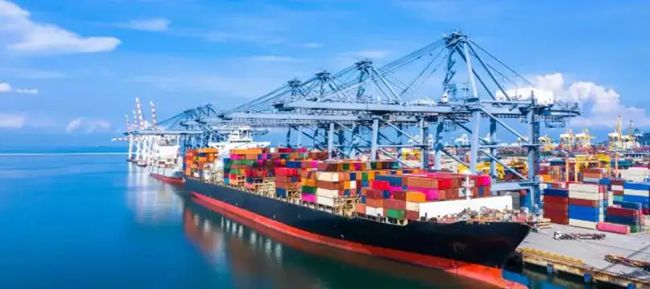In the light breeze of the sea, the port of Tianjin, a major port in northern China, welcomed a special "guest" - the ro-ro vessel "Viking Sea".
With 660 cars from Hebei Dingzhou sailed by this ship to the port of Lilqui, Chile, where the official opening of a new route to Star South America ro-ro, Beijing, Tianjin and Hebei region's export channel more smoothly.
After the outbreak of the new crown pneumonia, global shipping prices fluctuate sharply, "a box is difficult to find" had plagued many trade enterprises dependent on sea transport.
It is gratifying to note that since this year, an important index change shows the development trend of China's supply chain stabilization and improvement.
June 30, China's northern domestic and foreign trade shipping prices, "the wind vane" - Tianjin Shipping Index (TSI) closed at 1883.11 points, a slight decline of 0.48% compared to the end of May, down 3.39% compared to the beginning of the year, continuing the downward trend. Among them, the Northern International Container Tariff Index (TCI) closed at 3073.01 points, down 13.37% from the beginning of the year.

Tianjin International Trade and Shipping Service Center, the person in charge of the analysis said that the international container tariff retreat is the main reason for the TCI decline. With the epidemic prevention and control situation is generally good, the shipping supply chain operation efficiency is improved, the main routes have been adjusted downward, and the shipping index has steadily fallen to release the positive signal that export enterprises resume work and reach production, and port transportation is steadily "rebounding".
Along the winding coastline to the south, the situation tends to stabilize in another economically developed region of China - the Yangtze River Delta is also clearly reflected.
In the Shanghai Yangshan Deepwater Port Phase IV automated terminal, the container berth has been operating at full capacity, with huge ships of 10,000 tons sailing to the sea level one after another. And more than 200 kilometers away in Yangzhou Port of Yangtze River, loaded with 30 pieces of wind power blades and 173 pieces of wind power equipment components of the "Aulun" general bulk carrier, also sailed downstream into the East China Sea. Previously, two general bulk carriers have sailed from here, carrying wind turbine towers to Australia.
In the hot summer, several major hub ports in southern China have turned on their horsepower to ensure transportation, and newly-built ships have also set sail for trial, behind which is the vigor of industrial enterprises.
The weekly statistics released by Shanghai Shipping Exchange showed that on July 1, Shanghai export container composite freight index was 4203.27 points, which was nearly 20% lower than the historical high of 5109.60 points at the beginning of the year.
"The shipping index trajectory reflects the changes in the container transport market faced by enterprises since this year, showing that the contradiction between supply and demand is easing and transport costs and efficiency are returning to normality." Bian Chenming, President of Tianjin Region of Global Express (Shanghai) Supply Chain Technology Co., Ltd. analyzed.
Shipping index also reflects the development vitality of domestic trade circulation in China's coastal areas. Looking around the coast of Liaoning Province, one port is busy, orderly and efficient. This year's operation of the "Dalian-Ningbo" domestic trade route to build a new "bridge" for logistics and transport security, to promote the economic cycle between the Northeast and the Yangtze River Delta region.

Data show that the domestic coastal container tariff is also relatively stable, at the end of June, the coastal container tariff index (TDI) closed at 1520.75 points, up slightly by 2.41% compared with the beginning of the year. The index has returned to a stable upward channel.
Bo Wenguang, vice president of Nankai University Binhai Development Institute, said, compared with international shipping prices, domestic trade shipping price curve better reflects the current Chinese economic warm and cold. The shipping index, which is mainly stable, indicates that shipping supply and demand have basically returned to normal, which has an important indicative value for the next stage of economic rebound.
During the epidemic, China maintained the stable and orderly development of the industry chain supply chain by guiding the major international liner companies to strengthen the guarantee of flight and space input in the hub port routes, and formulating and implementing the policy of directional reduction of coastal port pilotage fee charges in various ways. A number of interviewed industry insiders said that this has an important role in enhancing the confidence and vitality of market players and smoothing the domestic and international double cycle.
From January to May this year, major international liner companies have put a total of 9.87 million TEU of space on China's major export ocean liner routes. According to China's National Bureau of Statistics, from January to May, China's total import and export of goods amounted to 1,603.74 billion yuan, up 8.3% year-on-year. China's position in the supply chain of the global industrial chain has become more consolidated.
Translated with www.DeepL.com/Translator (free version)

